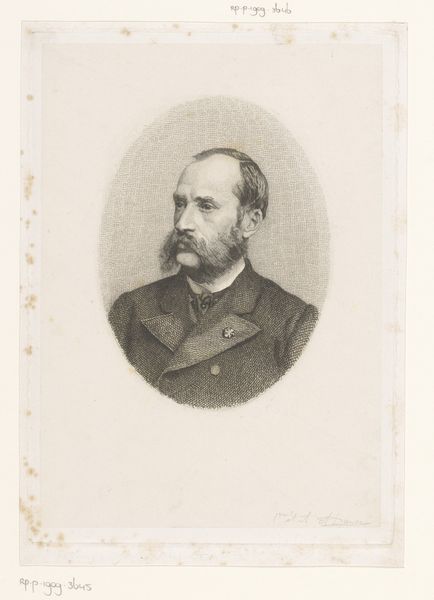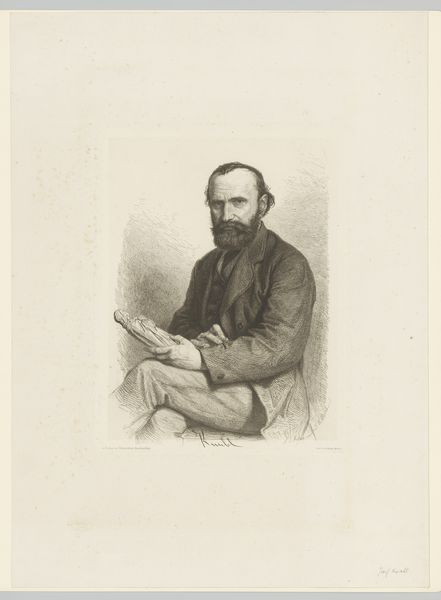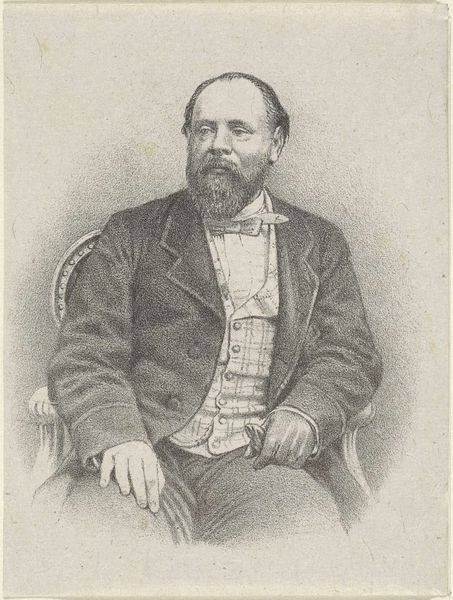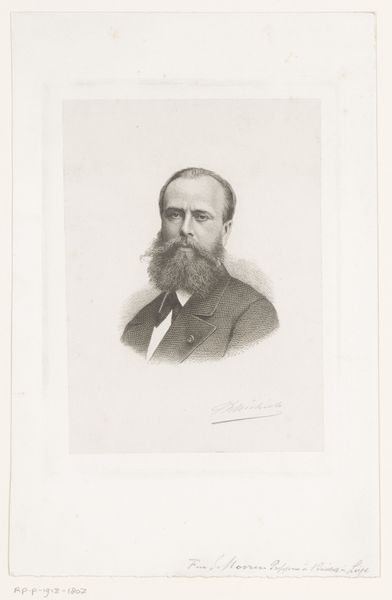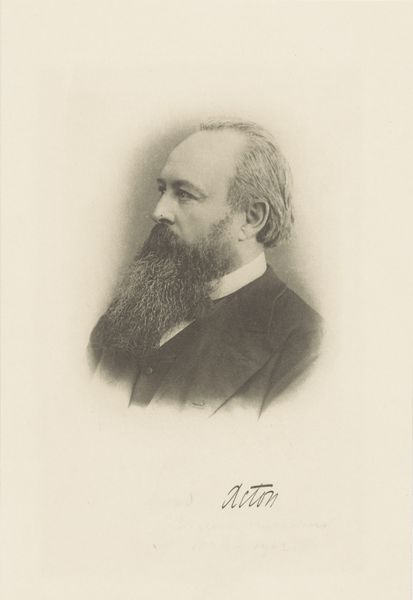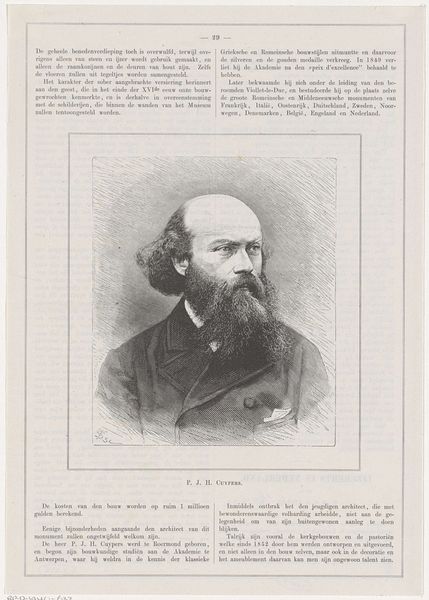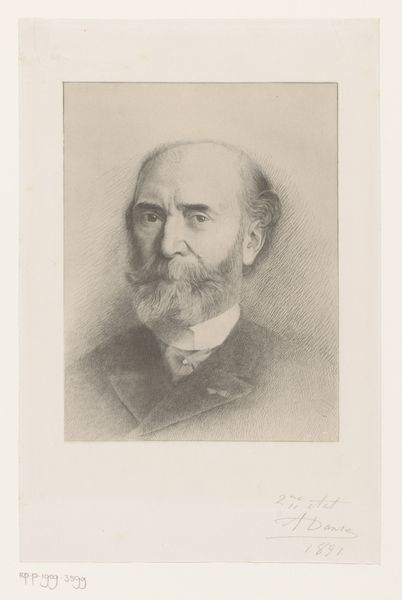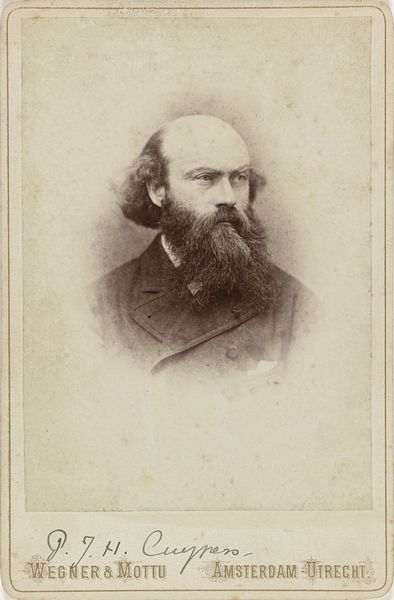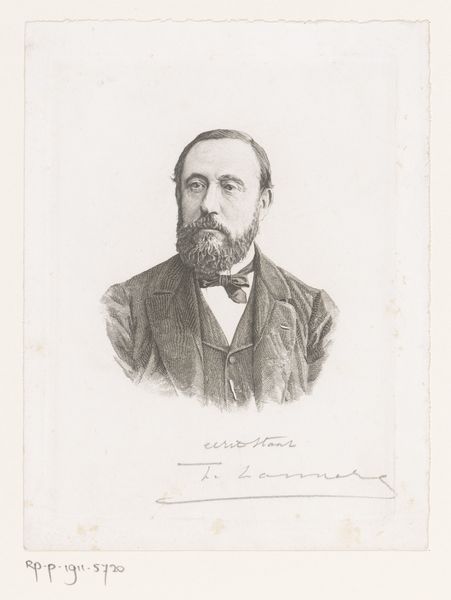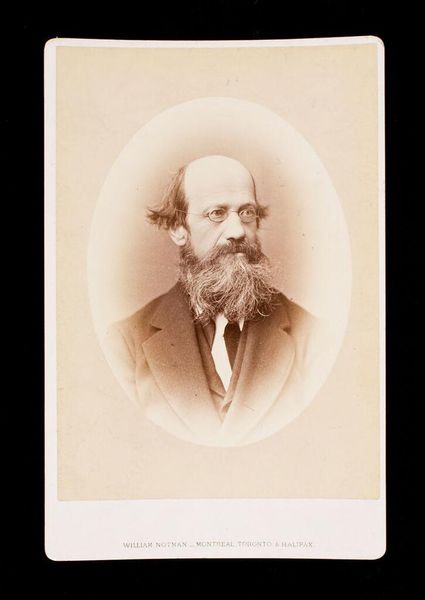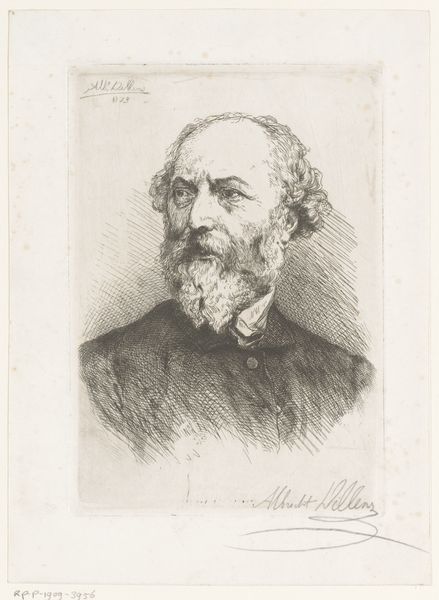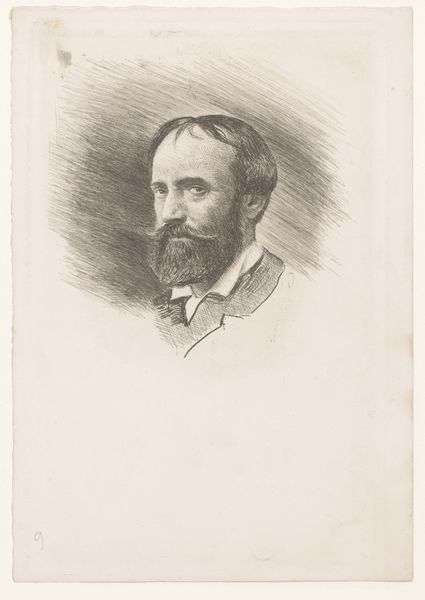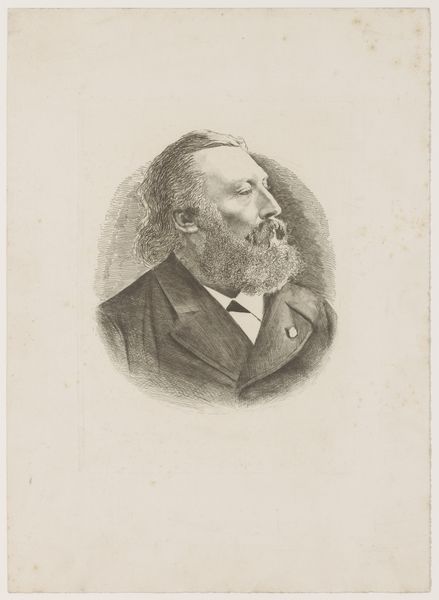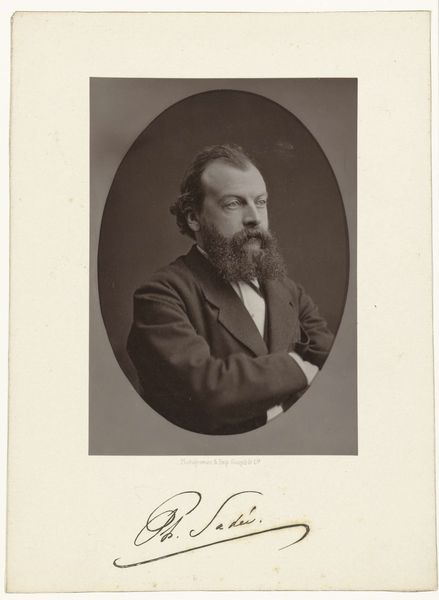
drawing, pencil
#
portrait
#
drawing
#
pencil drawing
#
pencil
#
portrait drawing
#
academic-art
#
realism
Dimensions: height 300 mm, width 211 mm
Copyright: Rijks Museum: Open Domain
Editor: Here we have a pencil drawing entitled "Portrait of Pierre Joseph Hubert Cuypers," created sometime between 1849 and 1895. It's striking how the artist captured the texture of the beard and coat with what seems like simple pencil strokes. What do you see in this piece from a formal perspective? Curator: Immediately, I am drawn to the contrast between the tightly rendered details of the face and the more loosely defined areas around the figure. The artist has used hatching and cross-hatching techniques to create depth and volume, skillfully employing the limited tonal range of the pencil. Consider how the direction of the lines creates a sense of form and substance. Editor: So, the technical execution is key? Curator: Precisely. The artist manipulates line weight and density to create subtle gradations of light and shadow, giving the portrait a sense of realism. Furthermore, observe the composition itself. The subject is centrally positioned, his gaze directed slightly off to the side, inviting the viewer to contemplate his thoughts and personality. Note that we achieve the character through line quality alone. The minimal use of shading contributes to a graphic clarity. Editor: It’s interesting how the artist was able to imply so much through those gradations and the subject's pose. I hadn't initially considered that the technical elements contributed that strongly to the feeling the artwork produces. Curator: Yes, it’s in that balance, the formal arrangement, and that semiotic relation that meaning arises. Focusing on these inherent characteristics helps reveal how an image's impact stems from the composition and artistry, more than context alone. Editor: That's given me a completely new way of considering the work! Thanks!
Comments
No comments
Be the first to comment and join the conversation on the ultimate creative platform.
